Free travel and in-depth travel will take you to visit the real ancient city of Dali (2)
"Everyone has a dream about the scenery and the moon in their hearts. In the tender time of Dali, everyone can be as romantic and free as Wang Ye Duan. Maybe you are Duan Yu, maybe you have Wang Yuyan by your side, and you have your Jianghu, so that all the leisure time in your life can be enjoyed in those legends of the scenery and the moon."
There are very convenient means of transportation for traveling in Dali. You can choose to rent a small electric car for yourself, or you can carpool and charter a car (the driver also works part-time photography, which is great), or choose the most convenient through train to the Qilin Scenic Area. The time is free and the itinerary is optional. It's worth it!
03 Years Recorded
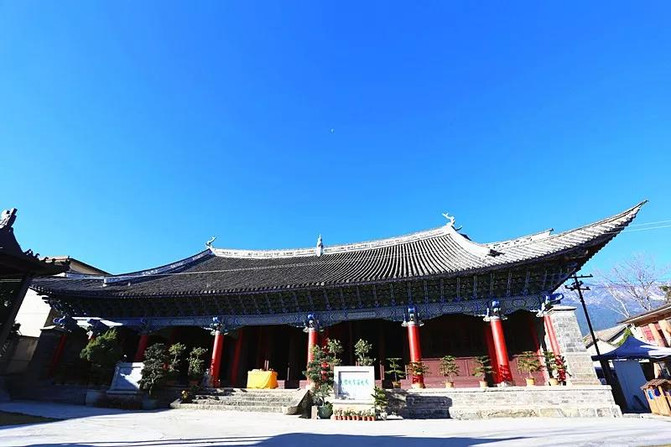
Dali Chenghuang Temple
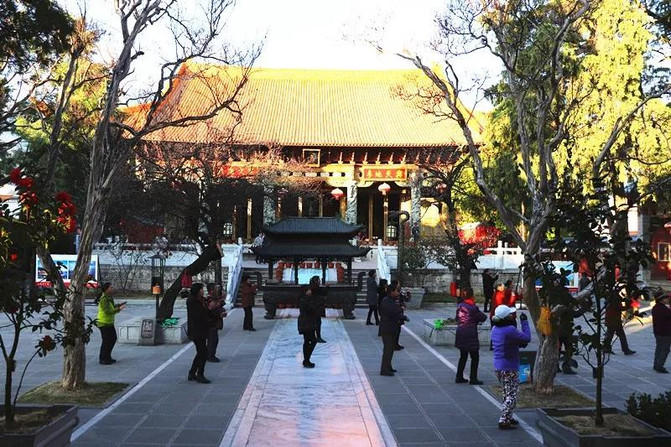
Dali Confucian Temple
Throughout the year, bustling tourists walk through the ancient city. In the early morning and late at night, you can better feel its simplicity, tranquility and time charm.
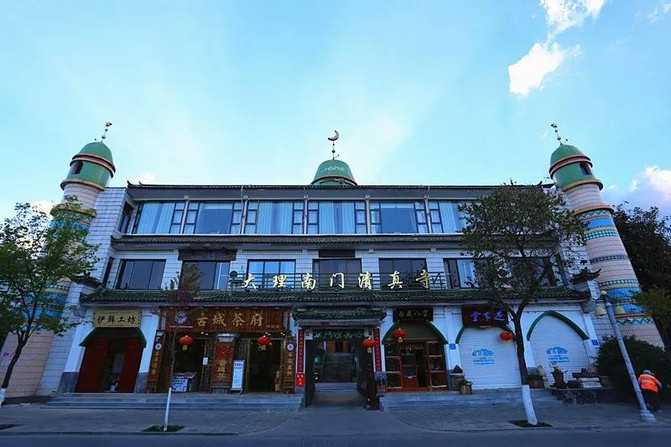
South Gate Mosque
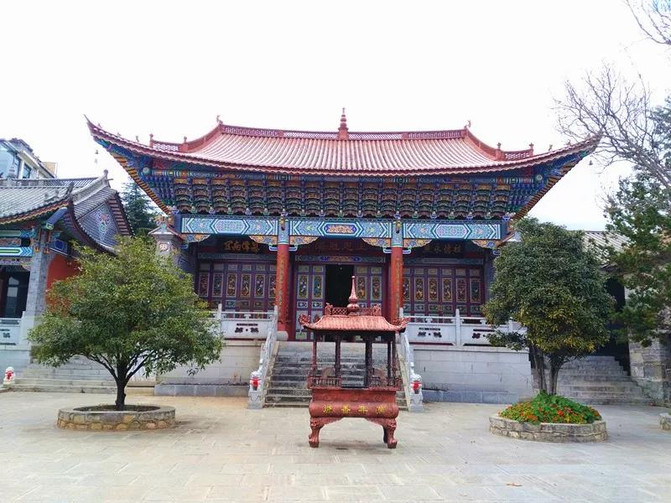
South Gate Benzhu Temple
In front of the building, look back at the thoughts flying in this free, inclusive and open land.
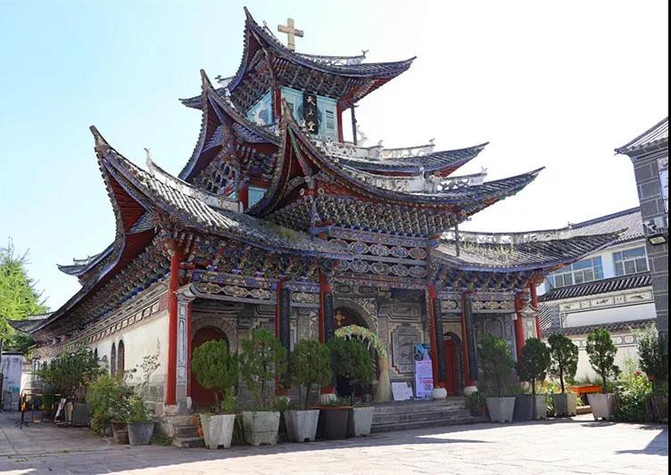
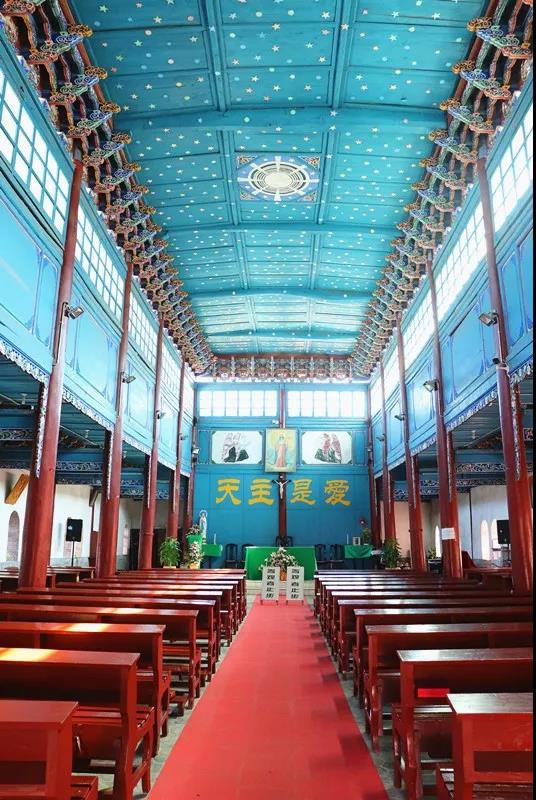
Dali Catholic Church
It is called the "Holy Three Hall" and was built in 1927 by French priest Ye Meizhang. It adopts the Bai solid wood structure building form. The eaves are arched by lions, elephants, dragons, phoenixes and other auspicious animals. The eaves are decorated with Bai style carving and painting. It is an artistic masterpiece that cleverly and perfectly integrates Chinese and Western architectural styles. It is also a harmonious portrayal of the diverse ethnic groups and cultures in Dali.
Dali Ancient City Catholic Church is the central church radiating from the diocese of western Yunnan. The church was built from 1927 to 1932 by Yan Meizhang (Chinese name), the legal pastor of the Foreign Mission Society in Paris. The church faces east and west and consists of a gate, a passage, two doors and a chapel. The main building is a terraces and beams structure, with two floors on the outside and a painted caisson on the top. The main doors are arched and the eaves rest on the top of the mountain. The second doors are connected to the church. In front of the hall is a gate building, with a double floor, high in the middle and low at both ends. It adopts the Bai solid wood structural building form, with lions, elephants, dragons, phoenixes and other auspicious beasts arched and supporting eaves. In 1985, it was announced by the People's Government of Dali City as a key cultural relic protection unit in Dali City.
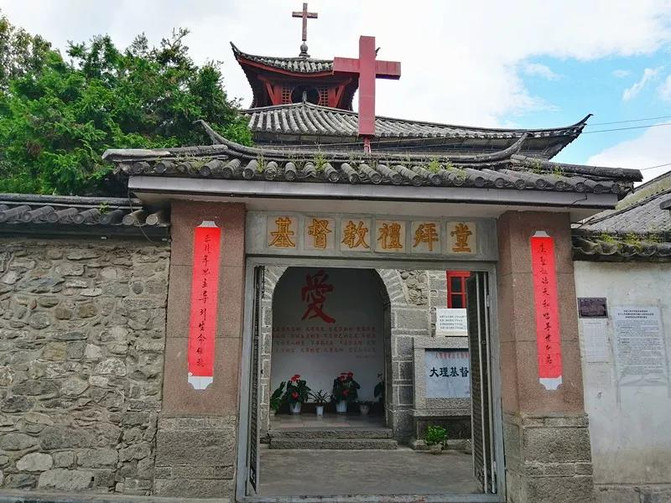
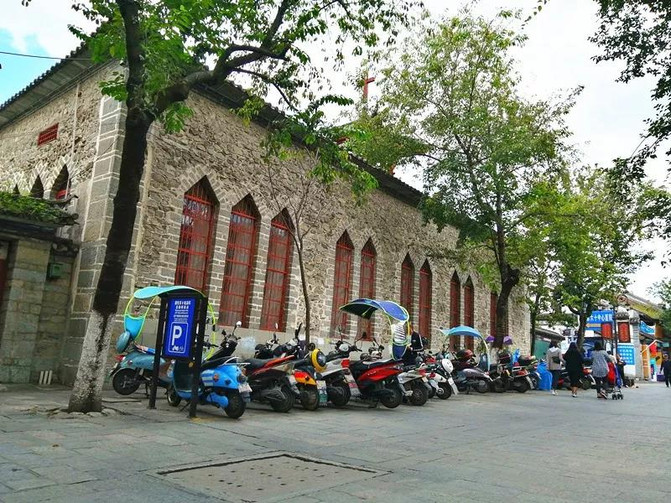
Dali Christian Church
Built in the 30th year of Guangxu of the Qing Dynasty (AD 1904), it is a beam-type stone-wood structure consisting of a foyer, a prayer room, a chapel and a bell tower. With traditional Bai architecture as its main style and retaining Western architectural elements, it is the earliest Christian church in Dali and is listed as one of the century-old churches in China.
Dali Ancient City Christian Church was built in 1914 (1904) by missionary Han Chunzhong. At that time, it was called the "Chinese Christian Chapel". In 1956, it was renamed "Dali Christian Unity Association." In 1980, it was renamed "Dali Ancient City Christian Church." In 2004, it was renamed "Dali Ancient City Christian Church" again. The church sits from north to south. The main structure is a civil structure, a four-pronged water tile roof, and the four walls are made of stone. In 2008, it was listed as a municipal cultural relic protection unit.

Grand Marshal of the President
It was built during the Kangxi period of the Qing Dynasty. It was originally the Yamen of the Imperial Prefecture of Yunnan Province. After the peasant uprising led by Du Wenxiu occupied Dali Prefecture in 1856, the Marshal's Mansion was established here. In 1986, it was built as the Dali City Museum. It is an institution for the collection, research and display of cultural relics in Dali City. It is a local comprehensive museum. The museum site is located in the Yamen of the Imperial Prefecture of Yunnan in the Qing Dynasty and the former site of Du Wenxiu's Marshal Mansion. In 1993, it was announced as a provincial key cultural relic protection unit. In 2010, it was rated as a national third-level museum.
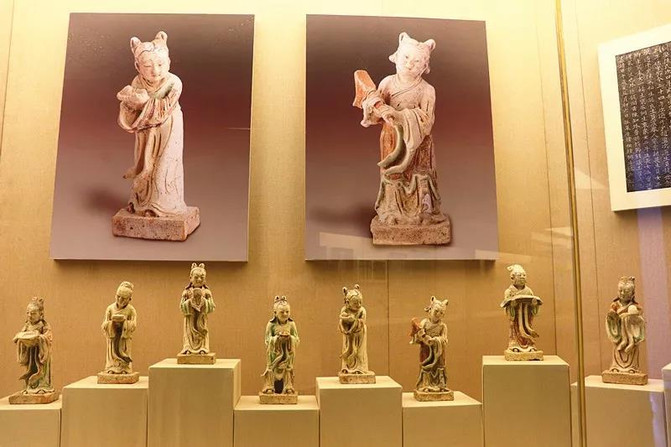

The cultural relics of various periods on display bear witness to the historical context of Dali. The forest of steles composed of Dali Guobei District, Yuanbei District, Ming and Qing Dynasty stele corridors, and Shanhua stele pavilions, each line and word is also a profound annotation of the splendid culture.
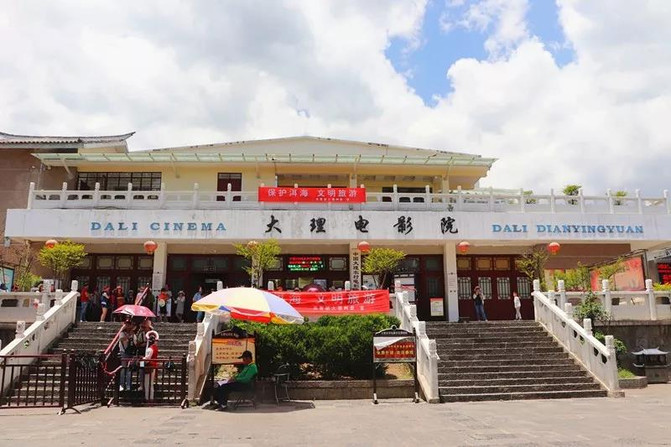
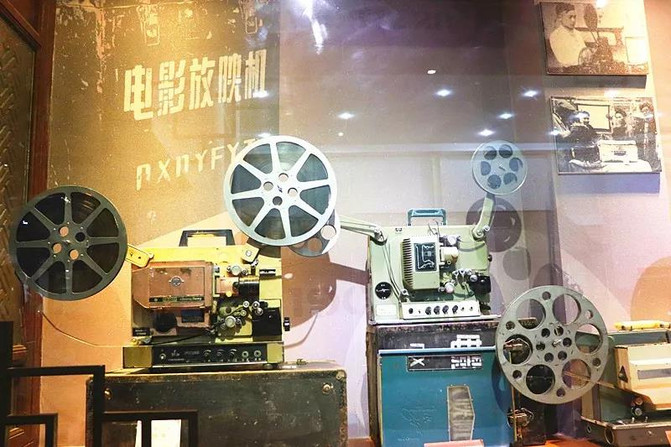
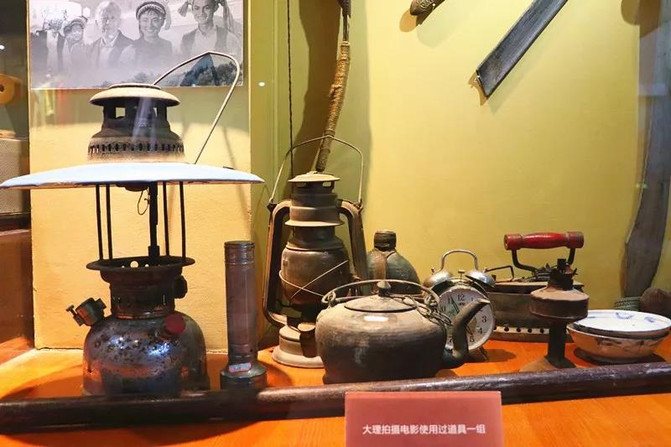
Rural Film History Museum
Located west of Fuxing Road in the ancient city of Dali and north of Yuer Road, it is the first special film museum in Yunnan Province and the first special rural film history museum in China. Visit various models of movie projectors and equipment, as well as movie posters, magazines, old films, old movie tickets, etc. that carry the memories of previous generations, feel the charm of movies and get a glimpse of the historical evolution and development of rural movies in Dali. If you have time, you can sit down and relive an old open-air movie.
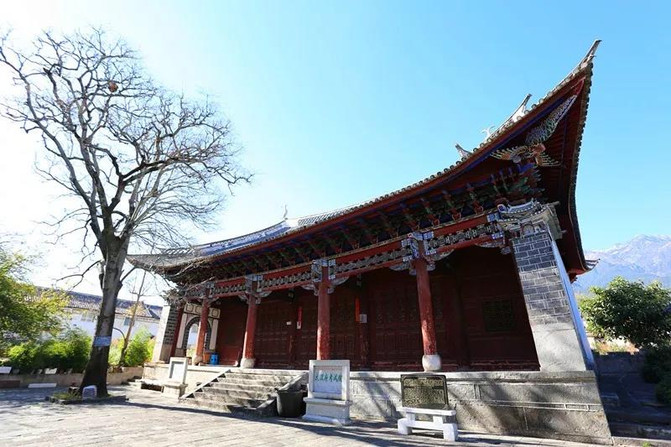
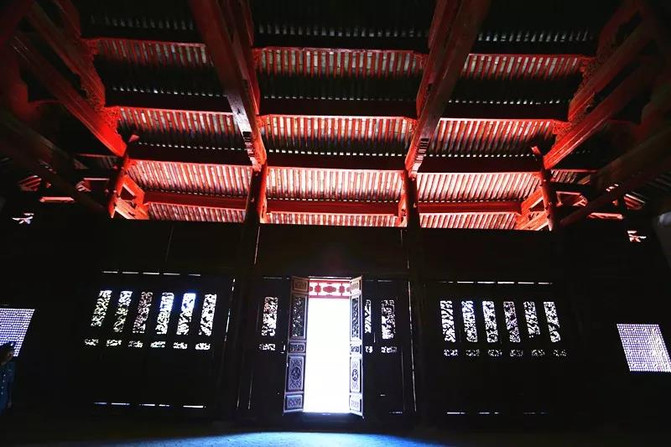
Dalifu Kaoyuan
It was built in the Ming Dynasty. The original building was located in the northwest corner of Dali City. It was moved to the current site in the tenth year of Tongzhi of the Qing Dynasty (AD 1871) and rebuilt as a place for child students in northwest Yunnan. The remaining main hall is also a vivid proof of Dali, a "famous country in literature". In 1985, it was announced by the Dali City People's Government as one of the first batch of key cultural relics protection units.
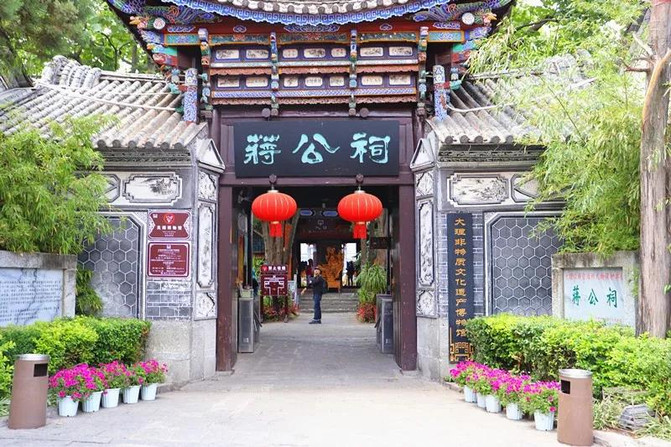
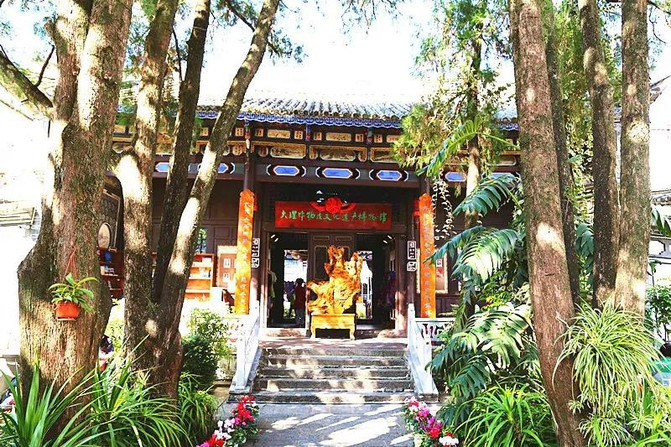
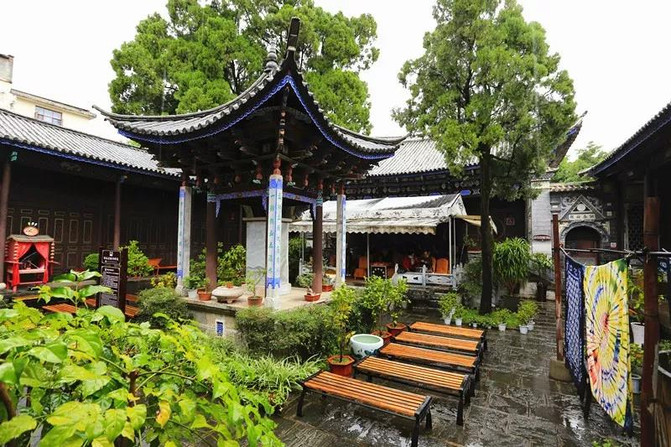
Jianggongci
It was originally an ancestral hall built by Emperor Guangxu of the Qing Dynasty to pay tribute to Jiang Zonghan, a famous general of Dali nationality, and was expanded into the Dali Intangible Cultural Heritage Museum. It displays a variety of Dali intangible cultural heritage such as traditional festivals, craftsmanship, and folk culture.
It's even better to choose a new path, walk through alleys, and encounter accidental joy while walking freely.
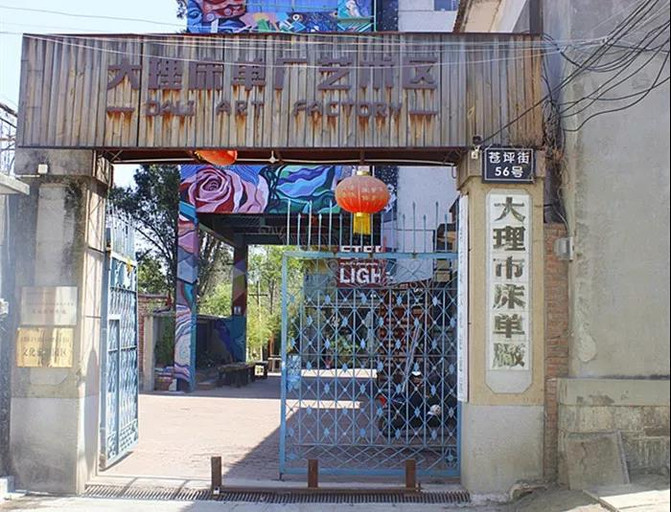

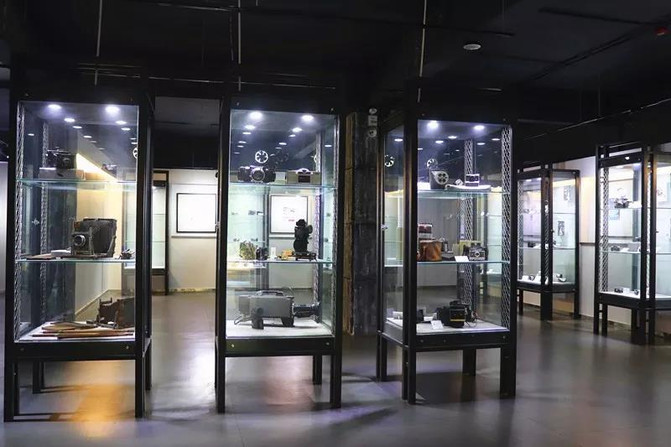
Sheet Factory Art District
An old factory gave birth to new life and became a famous literary and artistic life community. Grab a market here that sells art and freedom and feel the meaning of "small but beautiful". See century-old photos of Dali under the lens of foreigners in the Photography Museum and touch the time mark of this land.
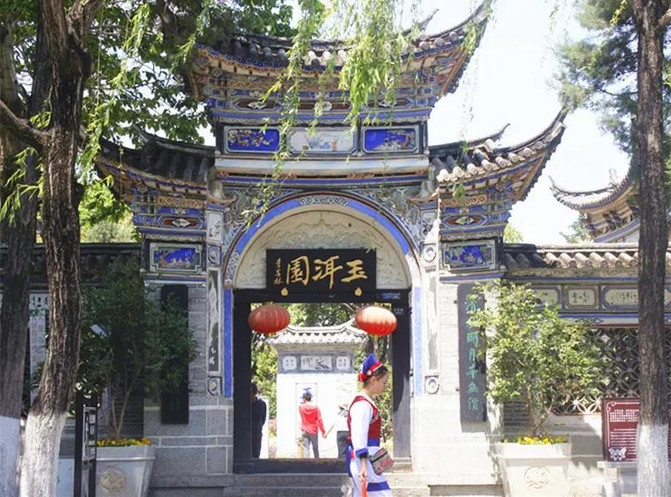
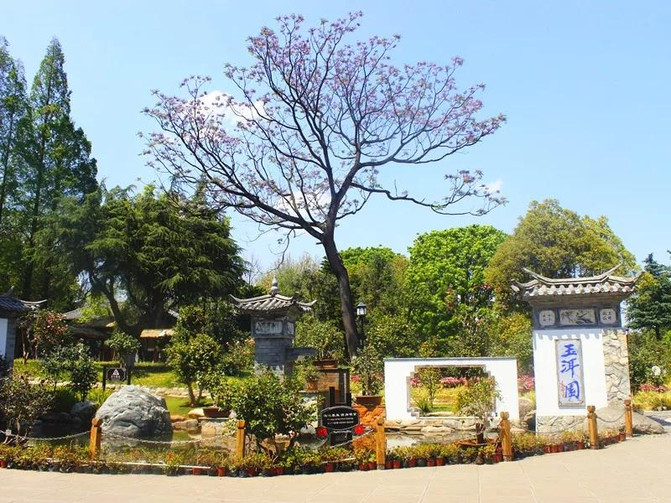

Yuer Park
A "Xiaojiabiyu" park in the ancient city was originally located at the Dali Agricultural and Forestry Experimental Ground in the early Republic of China. Famous trees, ancient trees and water pavilions and pavilions in the park isolate the noise and noise from a wall, leaving it alone and quiet. In the spring season, more than 300 varieties of camellia in the park gradually bloom, which is fascinating.
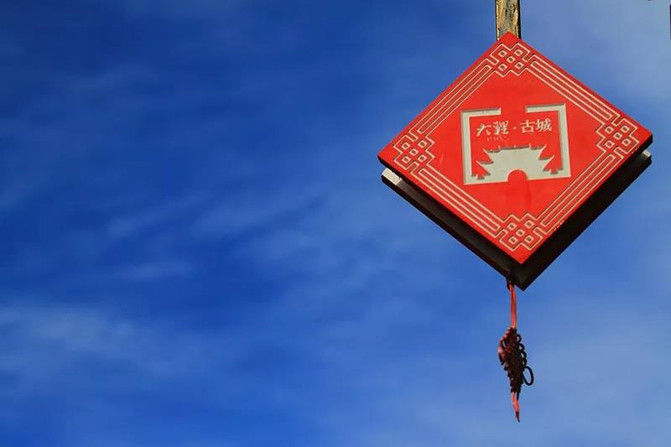
Previous Article:I missed my trip in 2020. Do you want to come to Yunnan for a New Year trip?
Next Article:Interesting souls attract each other, and see you in Dali when the breeze blows
